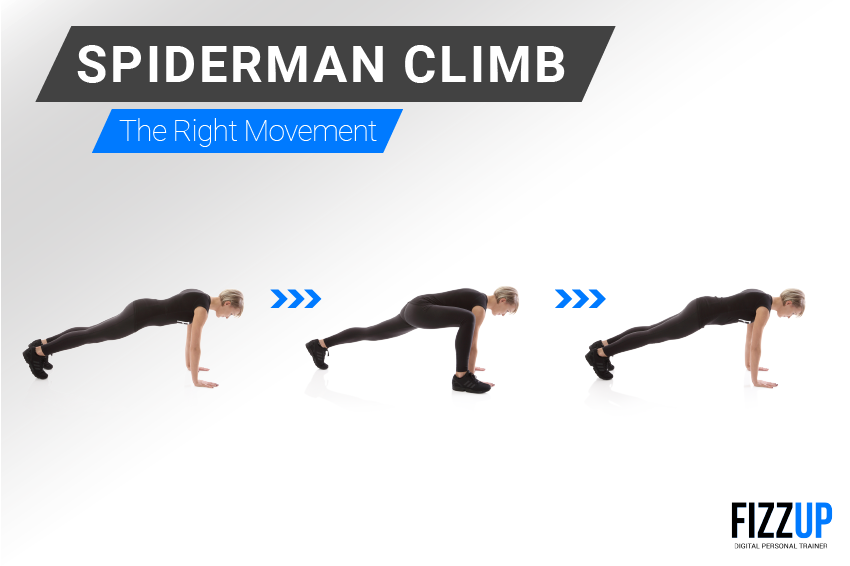The mountain climber is sure to please because it’s a full-body exercise that’s so easy, anyone can do it. This intense and dynamic strength training exercise is ideal for building your cardiovascular endurance, strengthening your abs and working all your body’s muscles. So, what are you waiting for? Make the mountain climber part of your workout and learn how to do it the right way so that you get maximum results.
Before you start, it’s a good idea to really understand the movement you’re going to do and to get the most out of these tips. The mountain climber requires balance and the ability to maintain good posture. Follow these instructions to work your body correctly.

Starting position Start in a plank/push-up position with your arms straight.
The movement: Bring your right knee toward your chest, then return to the starting position. That was the first half of the movement. Now do the same thing with the left knee. You’ve just completed one repetition. Now repeat.
“Keep your back straight”: Throughout the exercise, your back should stay perfectly straight. To do this, engage your core by contracting your abs and glutes. This will prevent you from experiencing any possible back pain.
“Only move your legs”: In order to do effective mountain climbers, your legs should be the only moving parts of your body. The rest of your body should be held in the starting position.
“Change the pace to reach specific goals”: Do quick and explosive repetitions to get your cardiovascular system working hard. Do slow and controlled repetitions to focus more on strength training.
The mountain climber is a bodyweight exercise that offers full-body strength training. It works all of your largest muscle groups in a variety of ways. Here’s a short list of the muscles you’ll work in particular:
Abs: These are targeted the most in order to help you maintain a plank position and avoid arching your back. The mountain climber flattens stomach by working the deeper abdominal muscles such as the transverse abdominis and obliques.

Arm muscles: When doing this exercise, your delts and triceps are worked in an isometric contraction, which enables you to keep your arms straight throughout the set. This kind of contraction occurs in static positions and enables you to resist pressure (in this case, the force of your body weight exerted on your arms).
Leg muscles: You work your glutes and hamstrings when you bring your leg back. Your quads and calves are used to generate the momentum you need in order to move your legs.
Hip flexors: This muscle group, which includes the iliopsoas muscle, is worked when you bring your knee toward your chest. They play an important role in keeping your body stable and balanced.
The mountain climber is more than a name; it’s an interesting exercise that comes in many variations, which makes working out fun and keeps you motivated. These variations include different levels of difficulty and suit a variety of needs. Keeping the FizzUp trainer’s tips in mind, here are two variations you’ve got to try!
Double mountain climber: The idea is the same as the traditional mountain climber, except that you bring both your legs toward your chest at the same time (with your knees between your hands). You then return to the starting position. This variation is great if you want to work on your strength and speed.
Spiderman climb: The starting position is the same. Instead of your knee, bring your foot next to your hand by bending your knee. Gradually return to the starting position. Repeat on the other side. This variation targets your obliques.

As a full-body strength training exercise, there are many benefits to the mountain climber. By working numerous muscles synergistically, dynamically and statically, you can:
Bear squats, burpees and mountain climbers are all full-body strength training exercises. Which ones have you tried?
Join the 7 million users already registered on FizzUp
Join us